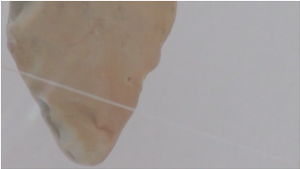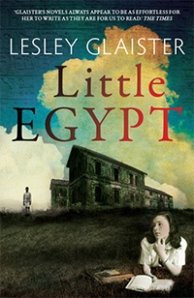Stones
This film was inspired by a found sculpture with stones in a Perspex box attached to a telegraph pole. When I shook the pole the stones bobbed about. Their movement interested me as stones are usually inanimate and we don’t see them move, bar the odd rock fall in mountainous places.
I filmed them in situ and the result was disappointing as I had too much camera judder and background noise that was distracting. It was hard to imagine that I would retrieve anything from my poor rushes and I had no other chance of filming them. I resolved to make something similar in my studio and film that. But in the meantime, I decided to use the footage I had got to make a prototype of the film. I felt that this would assist the construction of the piece so that the shots I got were appropriate for my intended outcome. I didn’t get around to making the stones piece as time intervened, so I made use of the film I had shot.
While I as doing this, someone had posted online a piece about the only known recording of Virginia Woolf’s voice. I know the recording from my time at the British Library, where they had used it in a collection of writers’ voices on a CD. Funnily enough, I had recently been watching the wonderful film The Hours based on the book by Michael Cunningham. I commented to a friend about how interesting Woolf’s voice was and what a surprise too. I had expected her to sound frail and timorous given her history of mental illness. I could not have been more wrong – Woolf sounded confident and in control.
Thinking about Woolf’s death (seen at the start of the film of The Hours), I then thought about Woolf filling her pockets with stones to weigh herself down. She committed suicide by drowning in the river Ouse near her home, Monk’s House, in Rodmell, Sussex. It seemed that my film of stones and Woolf’s voice might work together well. The stones nodding movement appears to be mocking and taunting as the bob silently and pointlessly. Woolf’s voice talks about the use of words and language. I have been reading about how memories are dependent upon language and I have been trying to make forgettable artworks. I wondered whether this combination of an essay on words by Woolf and the silent overlooked stones might be forgettable or at the very least, deal with some of the issues around forgetting.
The film I made has a soporific quality. The stones do nothing except gently move and the voice intones in grand old-fashioned English about the use of words. The words roll down from the past but fail to resonate deeply. They become a vehicle for a wider meditation but fail to gather moss.
Does the film succeed? On some level it is packed with zero incident (sic) and as such, is hard to watch all the way through. Should I be concerned about this? No not really. I wanted something that might be forgettable and it incurs feelings of boredom and drowsiness, a bit like slipping into unconsciousness through carbon monoxide poisoning, or becoming unconscious as the water fills your lungs.


